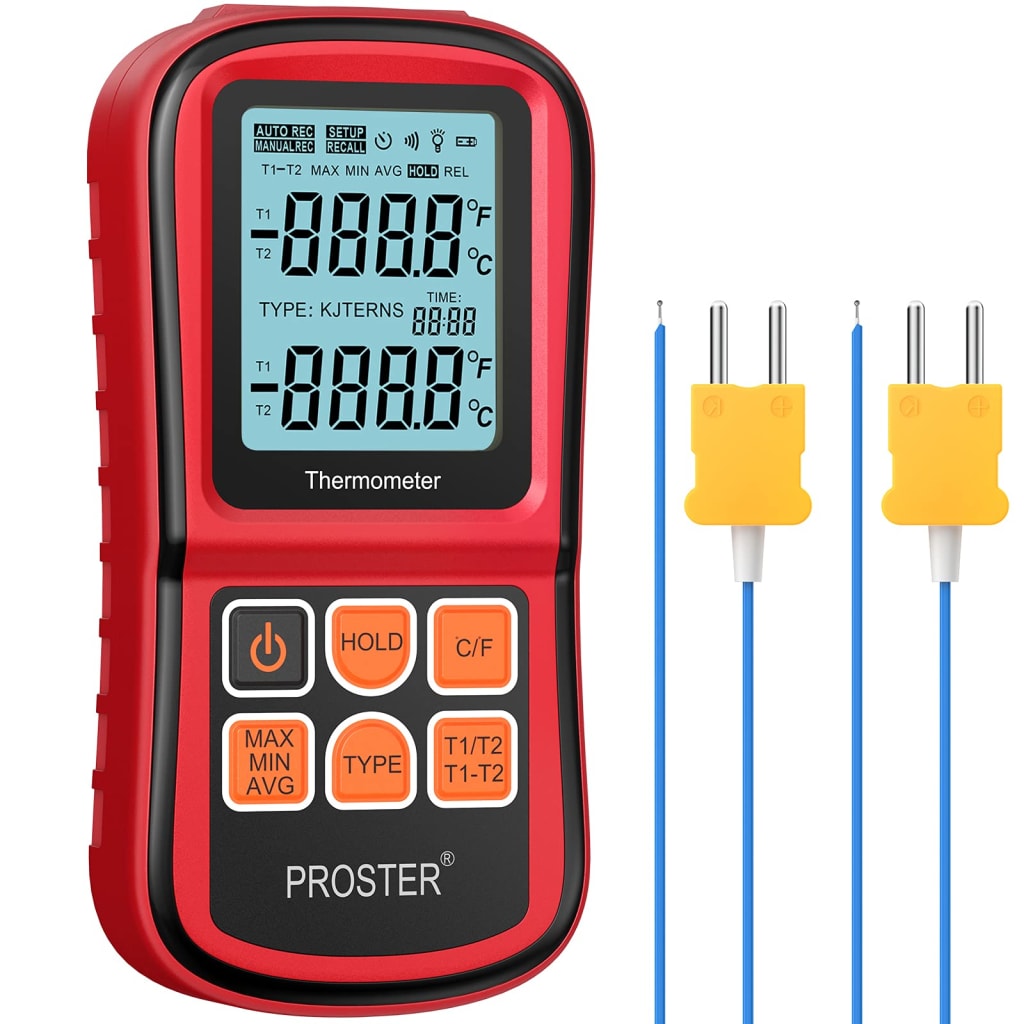Mastering Temperature Measurement with G Type Thermocouples
Mastering Temperature Measurement with G Type Thermocouples

Learn how to master temperature measurement with G Type thermocouples. Discover tips, tricks, and best practices in our comprehensive guide!
Temperature measurement is a critical aspect of various industrial processes, and the accuracy of this measurement can significantly impact the efficiency and safety of operations. When it comes to temperature monitoring, G type thermocouples stand out as reliable and versatile instruments. In this comprehensive guide, we will delve into the world of G type thermocouples, exploring their applications, best practices for utilization, calibration tips, common troubleshooting issues, and how to enhance efficiency and safety through their proper usage.
Understanding G Type Thermocouples in Industrial Temperature Measurement
Type G thermocouples are part of the noble metal thermocouple family and are known for their exceptional accuracy and stability in high-temperature environments. Composed of a combination of platinum (Pt) and rhodium (Rh), G type thermocouples are well-suited for applications that require precise temperature measurements above 1300°C. Industries such as aerospace, automotive, and metallurgy rely on G type thermocouples for their robust performance in extreme conditions.
Characteristics of Type G Thermocouples
High Accuracy: G type thermocouples offer high accuracy and repeatability, making them ideal for critical temperature monitoring applications.
High Stability: With excellent stability over time, G type thermocouples provide consistent and reliable temperature readings.
Wide Temperature Range: G type thermocouples can measure temperatures ranging from -270°C to 2300°C, covering a broad spectrum of industrial processes.
Durability: The platinum-rhodium alloy used in G type thermocouples ensures durability and resistance to corrosion, prolonging their lifespan.
Applications of G Type Thermocouples
G type thermocouples find extensive use in industries where precise temperature control is essential. Some common applications include: - Heat Treatment Processes: G type thermocouples are utilized in heat treatment furnaces to monitor and control the temperature during annealing, tempering, and quenching processes. - Gas Turbines: In the aerospace and power generation sectors, G type thermocouples play a crucial role in monitoring exhaust gas temperatures in gas turbines. - Metal Refining: Industries involved in metal refining and processing rely on G type thermocouples for accurate temperature measurements in smelting and casting operations.
Best Practices for Utilizing G Type Thermocouples in Industrial Equipment
To maximize the performance and longevity of G type thermocouples in industrial equipment, it is essential to follow best practices for their installation and maintenance.
Installation Guidelines
Proper Positioning: Ensure the thermocouple tip is placed at the desired measurement location without any obstructions that could affect temperature readings.
Secure Mounting: Use suitable mounting fixtures to secure the thermocouple in place and prevent movement during operation.
Avoid Contamination: Shield the thermocouple from contaminants that could degrade its accuracy, such as dust, moisture, or corrosive chemicals.
Maintenance Tips
Regular Calibration: Schedule periodic calibration checks to verify the accuracy of the thermocouple and make adjustments if necessary.
Inspect for Damage: Routinely inspect the thermocouple for any signs of wear or damage that could impact its performance.
Replace Aging Thermocouples: As thermocouples age, their accuracy may diminish, so it's important to replace them within the recommended timeframe.
Calibration Tips for Accurate Temperature Monitoring with G Type Thermocouples
Calibration is a critical aspect of ensuring the precision and reliability of temperature measurements with G type thermocouples. Follow these calibration tips to maintain accurate temperature monitoring in industrial processes.
Initial Calibration
Traceable Standards: Calibrate G type thermocouples against traceable standards to establish a baseline for accurate temperature measurements.
Multiple Points Calibration: Conduct calibrations at multiple temperature points to validate the linearity and consistency of the thermocouple readings.
Regular Recalibration
Scheduled Recalibration: Establish a recalibration schedule based on the frequency of thermocouple use and the criticality of temperature measurements.
Comparison Checks: Compare the thermocouple readings with a known reference source during recalibration to verify accuracy.
Calibration Documentation
Record Keeping: Maintain detailed records of calibration dates, results, and any adjustments made to the thermocouple to track its performance over time.
Certification Compliance: Ensure that calibration procedures adhere to industry standards and regulatory requirements for temperature measurement devices.
Troubleshooting Common Issues When Using G Type Thermocouples
Despite their reliability, G type thermocouples may encounter issues that affect their performance. Understanding common problems and troubleshooting techniques can help resolve issues promptly.
Drift in Readings
Potential Causes: Drift in readings can result from aging thermocouples, signal interference, or improper grounding.
Solution: Recalibrate the thermocouple, check for signal disturbances, and ensure proper grounding to stabilize temperature readings.
Erratic Readings
Potential Causes: Erratic readings may stem from loose connections, damaged thermocouple wires, or electrical noise.
Solution: Inspect and tighten connections, replace damaged wires, and shield the thermocouple from electrical interference to restore accurate readings.
Sensor Failure
Potential Causes: Sensor failure could be due to excessive heat exposure, mechanical damage, or material degradation.
Solution: Replace the faulty sensor with a new G type thermocouple and implement preventive measures to avoid similar failures in the future.
Enhancing Efficiency and Safety Through Proper Usage of G Type Thermocouples
Proper utilization of G type thermocouples not only ensures accurate temperature monitoring but also enhances efficiency and safety in industrial operations.
Efficiency Benefits
Optimized Processes: Accurate temperature measurements enable precise control of industrial processes, leading to improved efficiency and product quality.
Reduced Downtime: Proactive temperature monitoring with G type thermocouples helps identify potential issues early, reducing unplanned downtime.
Safety Advantages
Preventive Maintenance: Monitoring critical temperatures with G type thermocouples allows for timely maintenance interventions, preventing equipment failures and ensuring worker safety.
Compliance Assurance: Meeting temperature regulation requirements through G type thermocouple usage enhances workplace safety and regulatory compliance.
Cost Savings
Energy Efficiency: Fine-tuning temperature control with G type thermocouples can optimize energy consumption and reduce operational costs.
Equipment Longevity: Accurate temperature monitoring prolongs the lifespan of industrial equipment, minimizing repair and replacement expenses.
Type G Thermocouple
In conclusion, G type thermocouples are indispensable tools for precise temperature measurement in industrial settings. By understanding their characteristics, applications, and best practices for utilization, operators can harness the full potential of G type thermocouples to enhance efficiency, safety, and cost-effectiveness in temperature monitoring processes. With proper calibration, troubleshooting techniques, and maintenance, G type thermocouples can continue to deliver reliable and accurate temperature readings, contributing to the success of diverse industrial operations.
Application Description Semiconductor Manufacturing G type thermocouples are used in semiconductor manufacturing processes to monitor high-temperature reactions and ensure precise temperature control. Pharmaceutical Industry In pharmaceutical manufacturing, G type thermocouples play a vital role in monitoring and controlling temperatures during sterilization and chemical reactions. Research Laboratories Research facilities utilize G type thermocouples for accurate temperature measurements in controlled experiments and material testing. Food Processing G type thermocouples are employed in food processing industries to ensure food safety by monitoring temperatures during cooking, pasteurization, and cooling processes.
About the Creator
Enjoyed the story? Support the Creator.
Subscribe for free to receive all their stories in your feed. You could also pledge your support or give them a one-off tip, letting them know you appreciate their work.





Comments
There are no comments for this story
Be the first to respond and start the conversation.